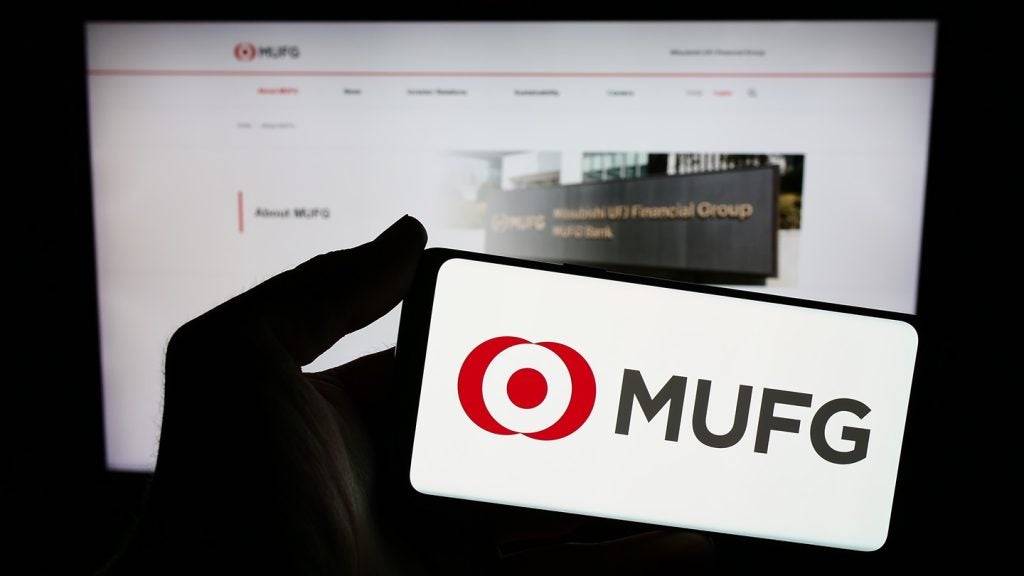With the highest GDPs per capita in the Asia-Pacific region
coupled with flexible financial regimes, Hong Kong and Singapore’s
attractions as wealth centres are obvious. A PBI analysis of the
region outlines the opportunities and challenges facing the wealth
management industry.

Singapore, and Hong Kong to a lesser extent, have long been touted
as Switzerlands of the East due to their role as the continent’s
key booking centres.
The attractions of Singapore in particular mean the city-state will
remain the key Asian private banking hub for the foreseeable
future, much as Switzerland has retained its lustre among Europeans
despite the fully-developed onshore private banking centres now
established across that continent.
Having incontestably succeeded in its intentions to become a major
global financial centre, the time seems ripe for Singapore to
solidify those gains into something even greater. While the sheer
amount of assets booked in Switzerland will not be surpassed by
Singapore for several years, it increasingly seems that something
of a crisis is enveloping Switzerland as the global recession
spreads its tentacles across the US and Europe.
But on a more significant note with regards to wealth management,
the finger-pointing and popular outcry that inevitably comes hand
in hand with an economic downturn has had Switzerland in its sights
for some time now. Beginning with the Liechtenstein saga in early
2008 and fuelled by the much-publicised efforts of US President
Barack Obama, the speculation over new limits on Swiss banking
secrecy has steadily increased and came to a head with the meeting
of the G20 in April.
How well do you really know your competitors?
Access the most comprehensive Company Profiles on the market, powered by GlobalData. Save hours of research. Gain competitive edge.

Thank you!
Your download email will arrive shortly
Not ready to buy yet? Download a free sample
We are confident about the unique quality of our Company Profiles. However, we want you to make the most beneficial decision for your business, so we offer a free sample that you can download by submitting the below form
By GlobalDataNot immune to international pressure
While Singapore has itself not been immune from international
pressure, it appears less encumbered by hostile neighbours and the
disclosure requirements of the European Union. Previously,
Singapore only shared tax information if it already had the
information in its records or it had the ‘domestic interest’ to
gather the requested information. Now it is proposing a law which
would mean it could also share information requests that do not
refer to Singapore tax matters.
“Singapore has never come out and said it wants to sell itself as a
tax haven, they’ve always positioned themselves as an international
financial centre,” said Anthonia Hui, whose 20-year private banking
career has seen her work in both Hong Kong and Singapore.
“I think this move was widely anticipated, and it has been noted as
a trend for some time that there’s no place to hide for people who
have undeclared money. For the Singapore government to agree to
exchange information makes sense if it is done via double tax
treaties and not on a ‘fishing’ basis, though it has been portrayed
in some sections of the media that they are caving in to
international demand.”
Hui added she expected Hong Kong to follow suit with similar
arrangements, but said the process would take longer because of
legislative differences between the two countries.
The increased emphasis on double tax agreements looks set to
promote the repatriation of client assets to home countries, but
the scale of this shift of assets is open to debate, and is
unlikely to impact the major centres in the early stages. The
increasing number of tax amnesties is the most obvious catalyst for
client outflows, but this for now appears more of a European
phenomenon, affecting Switzerland in particular.
European HNWIs on the whole still display the natural tendency to
book their assets close to home, but the trend of European assets
being held in Asia is growing. It has developed to the extent that
some of the major European-based private banks in Singapore now
have European-focused departments, working a kind of night shift
based on European hours of business.
This analysis does not mean to suggest that Switzerland’s role as
the world’s preeminent private banking centre is under threat, but
merely to point out that the repercussions of the financial crisis
are likely to have heightened Singapore’s attraction for wealth
managers hitherto focused on the US and Europe.
Indeed, as Switzerland tightens up some aspects of its taxation
requirements in fulfilment of its EU obligations, Singapore’s
attempts to strengthen its hand have continued. Singaporean
authorities, aware of the obvious economic benefits to having an
ever-increasing number of HNWIs located on its shores, has been
only too happy to facilitate the arrival of more private banking
business, particularly by encouraging the wealthy to domicile
themselves in the city-state itself.
Singapore’s Financial Investor Scheme
In Singapore, a key pillar of the government’s attempts to attract
more HNWIs to the city-state is the Financial Investor Scheme
(FIS), an initiative giving HNWIs the chance to apply for permanent
residence in Singapore and to purchase real estate there. Open to
those with minimum net personal assets of S$13 million ($9
million), the FIS requires investors to place at least S$3 million
with a regulated financial institution in Singapore, an amount
which must be held in the city-state for a minimum of five
years.
The attractions of such a scheme for private banks are self-evident
from an asset-gathering perspective, and similarly advantageous
when considering the ease of managing a relationship with a client
who is based in Singapore, and the potential for thereby achieving
a greater wallet share.
A further boon for private banks came in 2008, when estate duty was
abolished, thereby removing one of the main obstacles to residing
and purchasing property in the area. Described by one private
banker as a “huge boost” for the industry, the move brought
Singapore in-line with Hong Kong, which abolished estate duty in
2006.
Data compiled by Roman Scott, managing director of Calamander
Capital, the Singapore investment and advisory firm, has shown that
private banks in Asia have accumulated $600 billion in AuM as of
2007, a figure triple that seen in 2002.
The data, which only accounts for assets booked in Singapore and
Hong Kong, shows the rapid growth achieved by wealth managers in
Asia, but also indicates that the market potential remains vast and
largely untapped: $600 billion is equivalent to just 5 percent of
total Asian personal wealth, according to Boston Consulting
Group.
Scott’s figures are indicative not only of the aforementioned rapid
asset growth, but also of the range of players who have entered the
market over the past two to three years.
Wealth management in Asia is now a truly universal prospect, with
all segments making moves into the region. These range from a host
of pure-play Swiss private banks, such as Julius Baer and Pictet,
to domestic players, such as DBS, UOB and OCBC, and reinvigorated
wealth managers such as Barclays Wealth and Standard
Chartered.
The latter only began private banking operations in 2007 but is
strengthened through its subsequent acquisition of American
Express.
Recruitment and the structured products
controversy
The hiring of private bankers in Asia has long been a sticking
point for banks looking to launch true wealth management ventures
in the region. Cultural customs have also contributed to the
problem: broadly speaking, Asian clients are far more likely to
have built their wealth through their own business rather than
through inheritance, and frequently take a more hands-on approach
to their wealth as a result.
The consequent focus on advisory as opposed to discretionary
portfolio management means that relationship managers in Asia
typically find themselves dealing with half as many clients as
their peers in Europe. An industry-wide attempt to guide clients
towards advisory portfolio management solutions, hitherto showing
signs of progress, has been thwarted by client experiences in the
volatile equity markets of 2008.
Hiring approaches differ from bank to bank: some look to recruit
professionals from industries outside of finance, others follow a
policy of focusing their hiring on experience, or, as one industry
professional jokingly puts it, on “grey hair or no-hair
bankers”.
Given the slowdown now spreading across the region, the resultant
pruning of aggressive hiring targets and, in some cases, full-scale
relationship manager cutbacks are likely to mitigate
talent-sourcing problems in the near-term – or so it may seem on
the surface.
But the wider implications of the financial crisis mean that wealth
managers are paying closer attention than ever before to the
calibre of recruits, and in particular their intrapersonal
abilities. This new focus is being taken seriously by all concerned
– there is a real sense that client relationships, forever
highlighted as a key to private banking success but often cast
adrift in the race to sell proprietary products, are now being
given their due importance by private banks.
“Some [senior executives] have even voiced their wishes to change
remuneration of relationship managers from product sales to quality
of relationship and advice,” said Ben de Beyer, head of human
resources for private banking, priority/excel banking and small-
and medium-enterprise banking at Standard Chartered.
Despite the talk, Anthonia Hui, co-founder of AL Wealth Partners,
an independent wealth advisory firm in Singapore, said she had seen
little evidence banks offering private banking services were moving
away from sales-led remuneration structures.
“A lot of banks here talked about it, but you would have to
question how successfully they’ve implemented it,” she said.
“There’s an understanding among the banks that they need to do
something about it. From the relationship manager point of view,
they realised they would not be able to make a living on the
remuneration from sales-led pay because it has been so hard to sell
products in the last six months or so.”
The need for different priorities in remuneration at private banks
was highlighted in no small part by the controversies surrounding
structured products which have attracted particular attention in
Singapore, with some retail investors staging street protests
following substantial losses on supposedly capital-guaranteed
products linked to Lehman Brothers. The investors have maintained
that they were never informed that the products, sold by banks in
the region, had any connection with far-off investment banks such
as Lehman.
Hong Kong banks were found to have sold the products to the
elderly, poorly educated and mentally ill, according to a Hong Kong
Monetary Authority (HKMA) paper.
Vulnurable investors sold structured
products

It showed 102 examples of “vulnerable” investors being sold
structured products linked to the failed investment bank. The HKMA
received 20,960 complaints concerning Lehman-related
products.
Regulators in Singapore and Hong Kong, which were both impacted by
the controversy, have responded differently to the issue. Singapore
has taken a more regulation-led approach, and banned 10 companies
from selling the products in July this year.
Hong Kong has not regulated as much, but has forced banks which
sold the products to pay back more substantial sums to investors
who lost money on the products. Banks were told to pay 60 cents in
the dollar to clients under the age of 65 and 70 cents in the
dollar to older clients. It equates to an estimated HK$1.2 billion
($154 million), and led some to criticise the Singapore Monetary
Authority for not forcing its own banks to repay investors for
losses on the products.
Despite the lack of new rules regarding the sale of structured
products in Hong Kong, there is evidence banks are taking extreme
measures to get around the issue. PBI understands some are asking
clients to listen to 15 minute recorded messages which feature
disclaimers for products been sold to them in an effort to avoid
liability in the future.
Family offices
The arrival of a swathe of family offices is in many ways the sign
that a prospective financial hub has truly arrived on the world
stage. The trend brings with it both threats and opportunities to
private banks. Single family offices (SFOs), set up by UHNWIs to
manage their family’s wealth, have in recent years come to replace
private banks as the wealth management set-up of choice for the
ultra-discrete individual. Indeed, the segment can be said to be
following the same evolutionary pattern as the private bank itself,
with other families often coming on board and transforming the
model into a multi-family office (MFO), complete with the necessary
increase in scale that such a moniker implies.
On one level, this has created problems for private banks – not
only are family offices now estimated to manage 2 percent of the
available wealth pool worldwide, their highly secretive nature
means that SFOs in particular sometimes remain off even the most
well-informed private banker’s radar. Monitoring the existence of
these offices remains a crucial challenge for wealth managers. But
despite family offices controlling wealth that may otherwise be
available to financial institutions themselves, the limited core
competencies of a family office mean they typically have
outsourcing needs that can only be met by the same wealth
management industry.
The incidence of family offices across Asia is not yet on the same
level as that seen in Europe – where there are thought to be some
300 offices – and the opportunity for private banks is twofold in
this regard. On a primary level, the current market situation
likely represents a key tipping point for a great deal of untapped
private wealth.
Private banks can also play a key role in helping serve the needs
of existing family offices in Asia, not least through the provision
of portfolio management services. Some private banks, such as
Julius Baer, offer services specifically tailored to family
offices, though a recent study on the topic from VP Bank draws
useful conclusions regarding the separation of these offerings from
the private bank itself.
The report notes that difficulties in persuading clients that a
private bank’s family office unit is independent from the rest of
the institution could be alleviated through allowing families to
hold equity in family office sub-units – with the umbrella
organisation remaining wholly owned by the bank.
In addition, while family offices may not require full-scale wealth
solutions, a market opportunity also exists in terms of wealth
planning, particularly given the widespread transfer of wealth due
to take place in Asia over the next decade. Private banks in Asia
can point to the frequent events and educational activities held
for younger relatives of HNWIs as a sign that their capabilities in
this area are consistent and well-honed.
Competition
International private banks’ presence in Singapore and Hong Kong is
now well known, with any assessment of such competition likely to
encompass the same players as in the European market. The market
share of these participants roughly correlates with the global size
and scope of each institution.
While much has understandably been made of the way in which such
tables will be altered by the unprecedented reorganisation of the
global banking sector currently taking place, it also pays to be
aware of the considerable number of domestic competitors gradually
establishing themselves in Singapore and Hong Kong.
Supported by established business models and benefitting from brand
identities closely associated with the region, these players have
the chance to make gains at the expense of the global giants.
This article is an extract from a new VRL report Wealth Management
in Asia. Written by Dan Jones, the report looks in comprehensive
detail at the intricacies of numerous wealth markets across the
region. To order your copy, contact Shouvik Sen, shouvik.sen@vrlfinancialnews.com
Case study
CITICfirst racks up 13,700 clients and $4.7 billion in assets in
three years
Launched in March 2006, CITIC Ka Wah Bank’s CITICfirst service in
Hong Kong has had a flying start – establishing itself as a wealth
management service with HK$37 billion ($4.7 billion) of assets
under management with 13,700 clients.
The business was set up to combine the variety and convenience of
services typically offered to priority banking customers with the
level of service and unique solutions usually only found in private
banks.
CITICfirst is consequently based on CITIC Ka Wah Bank’s grounding
as a retail banking institution, though the bank has gradually
rolled out a number of CITICfirst Centres across Hong Kong.
Following a pattern typical of domestic wealth ventures, the
centres are located within standard CITIC branches. The bank had 14
such centres throughout Hong Kong, Kowloon and the New Territories
at the end of December 2008. Clients are also able to take
advantage of priority access at branches without a dedicated
CITICfirst Centre.
The service is available to individuals with liquid assets of
$130,000 or more, though the unit’s preferred focus is on investors
with at least $400,000 in liquid assets.
Seeking to offer holistic solutions, CITICfirst attempts to
differentiate itself through both the quality of its relationship
management (RM) pool – management has previously claimed that the
proportion of its advisers holding a Registered Financial Planner
or Certified Financial Planner qualification is the highest in Hong
Kong, and RMs typically serve fewer clients than in other
institutions – and through its wealth platform. This platform
leverages research and asset allocation recommendations from
Standard & Poor’s in order to build up accurate client risk
profiles.
These two facets combine through the use of constant portfolio
monitoring, which RMs can use to alert clients to significant
developments. Clients also have the option of setting up their own
personal alerts and can monitor their portfolio themselves through
a top-down performance tracker, which offers both a comprehensive
overview of investments and a detailed analysis of historic
performance.
The retail banking roots of the CITICfirst unit can also be seen in
the bank’s use of an introductory offer upon its launch, a
marketing concept uncommon among private banking institutions. In
order to attract the desired client base – those with $400,000 or
more in liquid assets – CITICfirst offered a ‘seeding’ promotion to
new clients in the first two months of its existence. Clients
depositing $400,000 with the bank were given free investment
capital of $4,000, with this amount rising to $120,000 for those
depositing $1.3 million or more with the bank.
Such promotions have proved successful; as of 30 December 2008
CITICfirst had over 13,700 clients with total assets increasing to
HK$37 billion, growth of 7.6 percent despite the general decline in
investment markets.
That client figure had moreover increased by 32.6 percent since
end-2007, with over half being new-to-bank customers – a sign that
the retail-originated model is increasingly being viewed as a
stand-alone wealth management proposition.
CITICfirst is using this reputation to boost the launch and sale of
wealth management products: 35 were launched in the first half of
2008 across CITIC Group as a whole, with sales volume consequently
recording a sharp increase, though the bank is unlikely to have
maintained such performance in the second half of the year given
the significant increase in clients’ risk-sensitivity. Products
are, nonetheless, specifically tailored to individual clients and
able to be rolled out within 24 hours.







